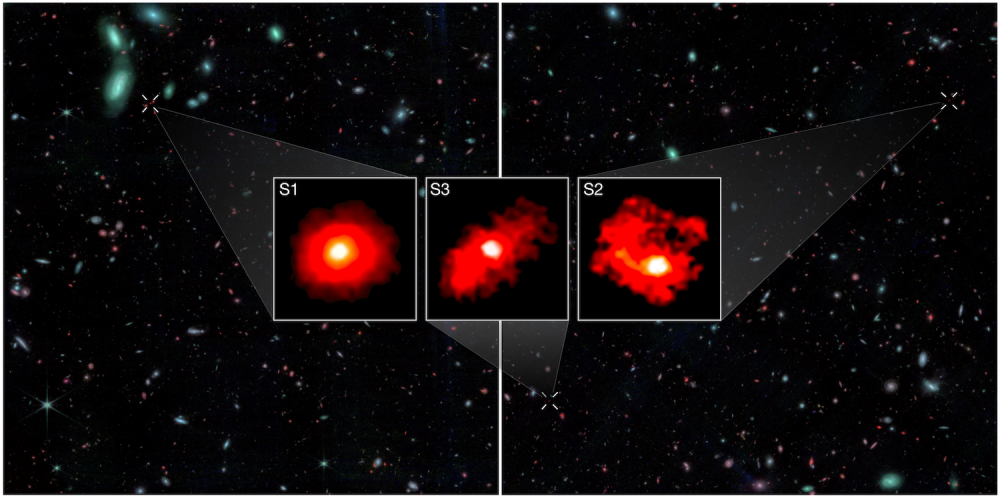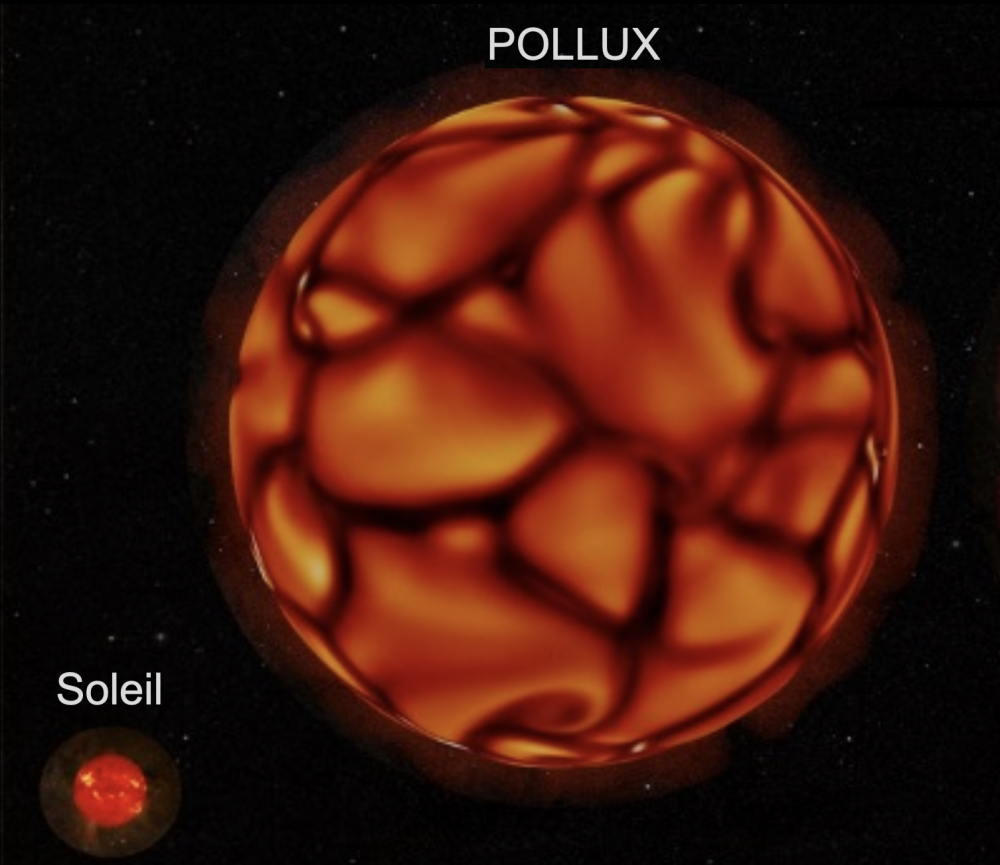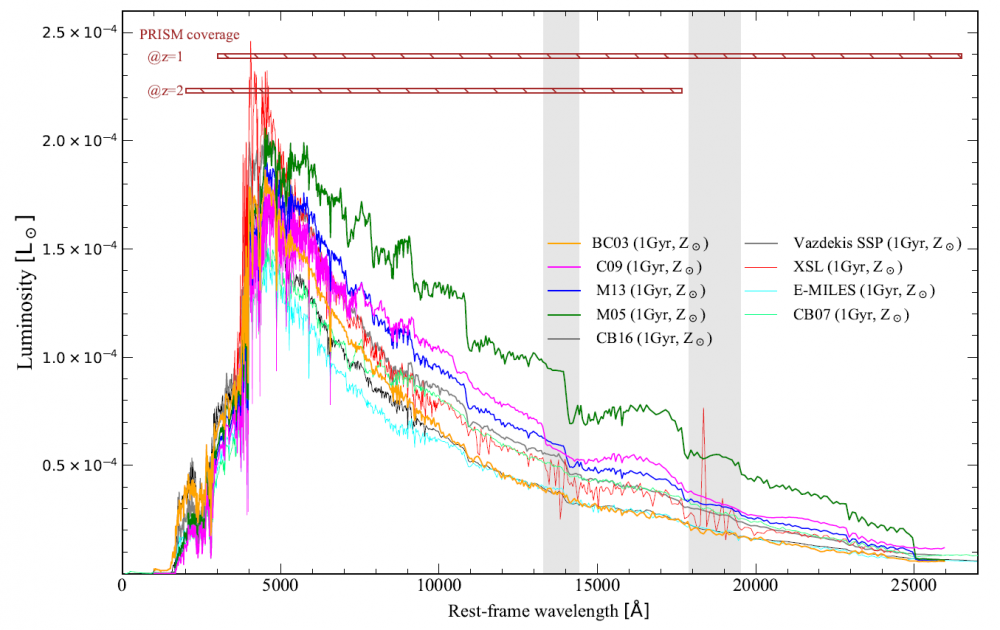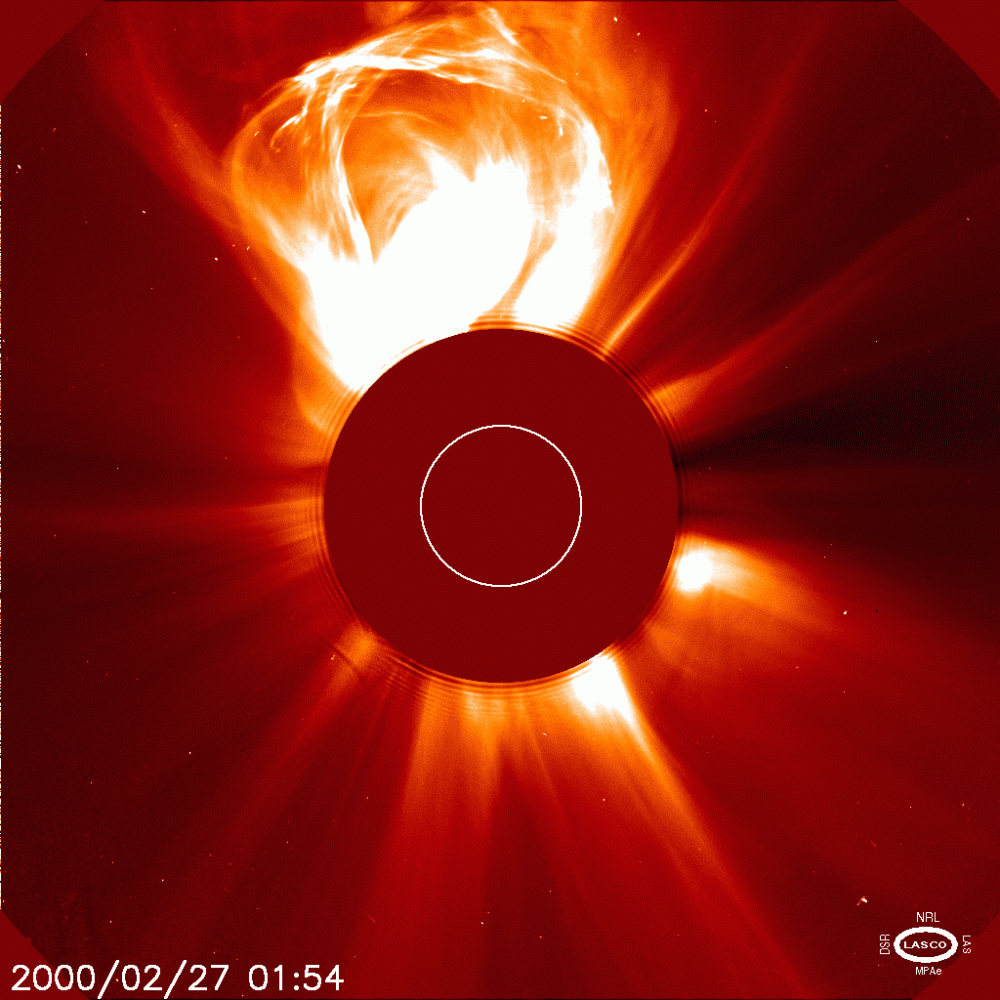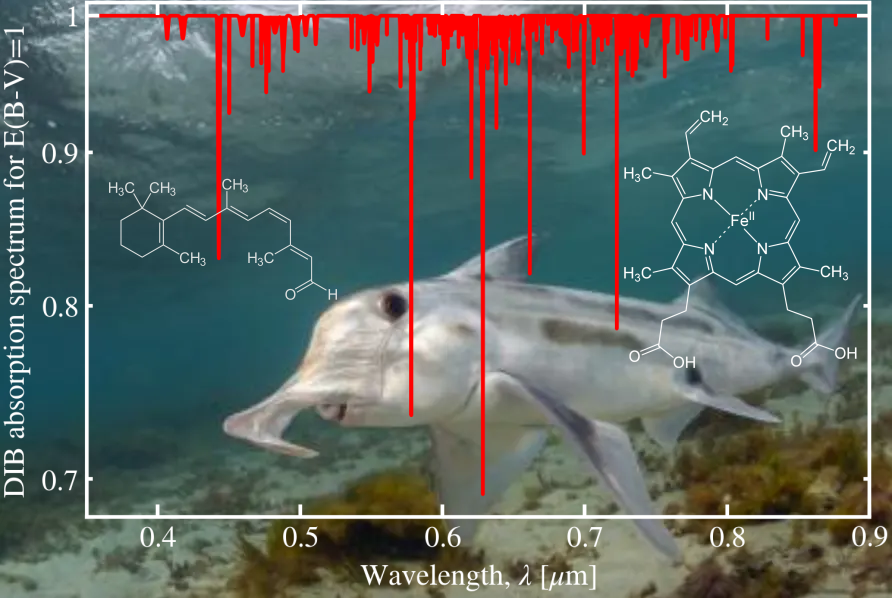Is the Standard Model of cosmology, the basis of our understanding of the Universe since the Big Bang, in danger? Recent observations by the James Webb Space Telescope (JWST), carried out by an international team including the CEA-IRFU Astrophysics Department, have revealed massive galaxies in the young Universe, sparking a lively debate within the scientific community. While some researchers see this as calling the model into question, others argue that these galactic masses have been overestimated, suggesting that more precise measurements could resolve the enigma without invalidating the Standard Model. Thanks to the FRESCO programme, spectroscopic data that are more precise than previous measurements appear to reconcile these early galaxies with theoretical predictions. However, three extreme cases continue to challenge our understanding of galaxy formation.
The Sun's magnetic field is generated by a dynamo effect, caused by convection and rotation in its envelope. It will evolve in the distant future when our star becomes a red giant, an evolved star characterised by an extended envelope and much slower rotation. The question then arises: how will the magnetic field evolve when our Sun transforms?
To answer this question, a team of researchers affiliated to the Astrophysics Department at CEA Paris-Saclay and the OSU OREME at the University of Montpellier have carried out several advanced high-performance numerical simulations of the star Pollux, a red giant that serves as an example of what the Sun could become, with a very weak magnetic field of less than 1 Gauss, due to its extended envelope.
These simulations reproduce the observed value and explain this low value by showing that between 2 and 8% of the plasma's kinetic (motion) energy is converted into magnetic energy, depending on the size of the convection cells at the source of the dynamo. Smaller cells create less intense and more complex fields, because the correlation between magnetic and convective structures diminishes on a large scale. The study also shows that Pollux's magnetic field reverses its polarity over several years, like the Sun's, a phenomenon that has not yet been observed but that is suggested by the simulations and needs to be observed over a longer period to be confirmed.
In addition, this work enriches our understanding of the magnetism of giant stars and opens up new prospects for ESA's PLATO mission, which will explore the magnetic activity of stars and its impact on exoplanets.
This study has been published in The Astrophysical Journal.
Understanding the diverse stellar populations that make up galaxies is crucial to studying their formation over cosmic time. Nevertheless, some intractable stars continue to resist the modellers! Their complex nature and short lifetimes make stars in the asymptotic branch of thermally pulsating giants (TP-AGB) difficult to model, a subject of debate for decades. The James Webb Space Telescope is finally lifting the veil on their contribution to the spectrum of distant galaxies. These discoveries have implications for determining the age and stellar mass of galaxies, as well as for cosmic dust production and chemical enrichment.
This discovery has just been published in the prestigious journal Nature
To unravel this mystery, several teams with diverse skills from the Astrophysics Department had to come together, as the architecture that unites the star to its planet is highly complex. They had to combine a detailed understanding of stellar and planetary physics, exploring their interactions, with a thorough knowledge of the observations made by NASA's Kepler satellite to be able to decipher the data.
The study shows that the observed rarity seems to derive not from observational bias, but rather from physical causes. Tidal effects and magnetism are sufficient to explain qualitatively and quantitatively the migration of nearby planets around fast-rotating stars. Moreover, this migration appears to be dependent on the spectral type (fundamentally linked to mass) of the star. While these results are promising, it is nevertheless necessary to expand the sample size to better constrain scarcity and better understand the mechanisms at play. In particular, this study highlights the importance of considering the spectral type of stars (their masses) if we are to correctly model star-planet interactions.
This work is published in Astronomy & Astrophysics.
Barbara Perri, an astrophysicist at Irfu's Astrophysics Department and an expert in space weather, has been awarded an ANR contract for the WindTRUST project, which aims to predict solar activity in order to protect against it.
The WindTRUST project is based on improved numerical simulations of the environment between the Sun and Earth, in particular the still poorly understood link between the Sun's magnetic atmosphere and its fast-moving wind of energetic particles.
A team from the Département d'Astrophysique, in collaboration with the start-up Iris.AI, has shown that one could find, in select biology studies, some relevant information to better understand the interstellar medium. These results will soon appear in the Journal of Interdisciplinary Methodologies and Issues in Science.

